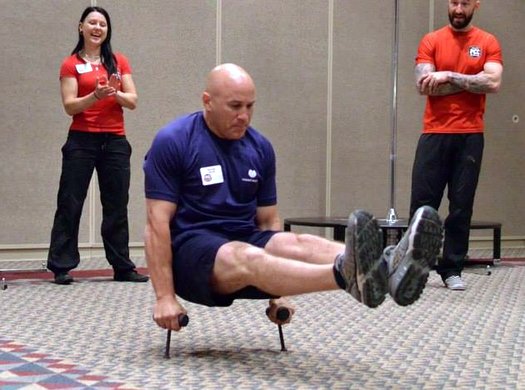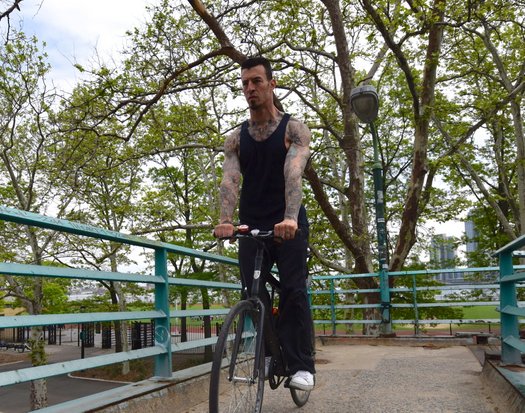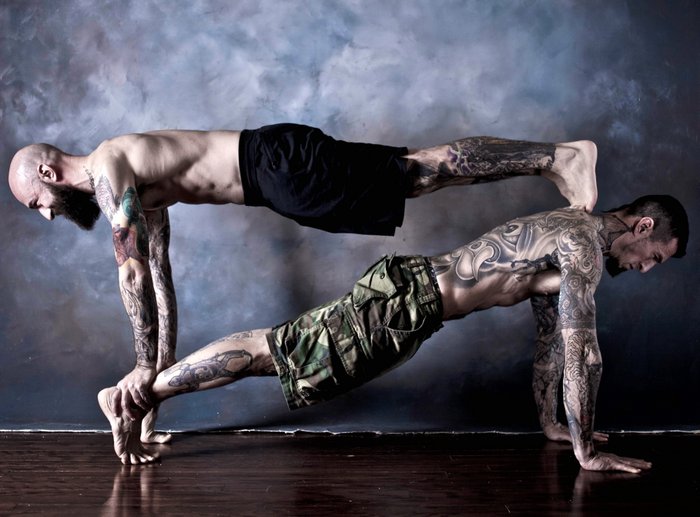
It could be argued that the push-up is the most popular exercise ever invented. Before we had chrome plated dumbbells and Olympic sized barbells people had to rely on their own body weight for building strength.
Yet is the push-up outdated? Should it be used only as a simple conditioning exercise or as a “finisher” after the “real” weight-based exercises are completed?
Of course not.
There is still tremendous value to the push-up. It is the Godfather of all exercises so we must pay it due respect. Yet, descendants of this exercise have sprung up around the world to help bodyweight enthusiasts continue to improve their strength and build more muscle.
Today, I’d like to share with you my five favorite unique push-up variations to help you increase strength and size.
These exercises are super effective for three main reasons…
1. Challenge Different Muscle Groups
The typical push-up targets mostly the middle portion of the chest, front deltoids and triceps. In order to get stronger, you have to challenge your muscles from different angles and in unique ways. Some of these exercises you might have never heard of before, but after you try each of them, you’ll feel muscles you never knew you had.
2. Build Whole Body Strength
True bodyweight enthusiasts know that one of the greatest benefits to calisthenics exercises is that they build whole body strength. Isolation exercises can cause weak links in your armor that may eventually lead to an injury.
The exercises below surpass most other forms of exercise because they strengthen the entire chain (whole body) as a functional unit.
3. They Are Fun To Do!
Let’s be honest, haven’t you gotten tired of cranking out rep after rep of basic push-ups? When you add unique exercises to your normal routine it becomes fresh and exciting again. Which makes you WANT to do it!
That’s one of the most important aspects of fitness. Sure, getting a nice physique and becoming healthier is great, but we only get one life to live – why grudge through your normal routine? Have fun with it!
Changing up your exercises and adopting new and unique styles will help you do this.
Ok, now on to the exercises…
Variation 1: Barbwire Push-Up
The Barbwire Push-Up (also known as the Diver Bomber Push-Up) is great for developing strength through a large range of motion. You’ll work the upper, middle and lower portions of the chest along with the front, middle and rear delts.
One of the greatest benefits is that with each rep, you are improving spinal mobility. The spine is so important for keeping up your strength. As soon as your spine starts to stiffen you lose functionality which leads to poor performance.
How To Do The Barbwire Push-Up
Start off in a “Downward Dog Position”. Lower yourself down toward the floor as if you were sliding under barbwire. The more arc you can get in your spine the better. As you “slip under the barbwire” arch up while pressing down against the floor. At this point you should have a full arch in your back. Make sure to look up, too, which will extend the arch into your cervical spine.
Begin to arc back down “under the barbwire” while curving your spine the entire time. Press back to starting position.
Coaching Tips
1. The key to this exercise is getting a full range of motion. Make sure you that you are arching as much as you can.
2. To make the exercise easier you can do any number of modifications:
- Perform the exercise on your knees (you won’t get much range of motion but it will still help you build strength).
- Decrease the range of motion in your spine (i.e. don’t go down as far or arch up as high).
- Do the first part of the movement normally but instead of arching back “under the barbwire” come straight to the starting position, which is also known as a Hindu Push-Up.
Variation 2: X Push-Up
The X Push-Up is one of the greatest exercises to develop whole body strength. Normally, with any exercise, you’ll have some muscles that are working much harder than others because the exercise targets a particular muscle group.
With the X Push-Up it seems that it targets ALL of your major muscle groups. In order to perform this exercise your chest, back, core, shoulders, and glutes will be firing on all cylinders.
How To Do The X Push-Up
From a normal push-up position, separate your legs so that your feet are 1.5x shoulder width. Then separate your hands 1.5x shoulder width and bring them up so they are NOT in line with your head. Your body will look like a big “X”. The further you separate your hands and the higher you bring them, the harder the exercise will be.
Lower yourself down until your nose gently touches the ground. Push back up.
Coaching Tips
1. It is important to maintain proper alignment when performing this exercise. One tip that will help you is to keep your glutes and core tight throughout every rep.
2. If the full X Push-Up is too difficult, bring your hands and legs in to 1.2x shoulder width. This will create less demand on your muscles and allow you to progress up to 1.5x shoulder width or even more.
Variation 3: Diamond Kiss Push-Up
The Diamond Kiss Push-Up is a go-to calisthenics exercise for developing strong triceps. It also helps to target the inner portion of the chest muscle and lats. You have probably heard that form is very important when performing any exercise. Well, when performing the Diamond Kiss Push-Up, it is especially important because you are putting tremendous demand on your shoulders. If you can not perform the exercise without your spine being perfectly in-line, then switch to an easier progression.
How To Do The Diamond Kiss Push-Up
Start off in a normal push-up position. Place your thumb and pointer finger together creating a diamond in-between. The diamond should be in line with your head. While keeping your spine perfectly straight lower yourself down until your nose touches the ground in between the diamond. Then press back up.
Coaching Tips
1. As mentioned before it is very important to keep your spine straight.
2. Elbow positioning is also important. While performing this exercise the more you flare your elbows out to the side, the greater likelihood of injury. Try to keep your elbows tucked close to your body as much as possible.
3. Easier Variations: If you can’t complete 5-6 reps of this variation I recommend separating the fingers so that there is more space between your hands. This will decrease the emphasis on your triceps and rely more upon your chest muscles. As your triceps get stronger you’ll be able to bring your hands in close.
Variation 4: Spider Push-Up
The Spider Push-Up is an exercise that incorporates abdominal specific training into the normal push-up. If you have a strong upper body this is a great exercise to incorporate into your training because it will help tighten not only your abs but also your obliques.
How To Do The Spider Push-Up
Start off in a normal push-up position. Lower yourself down like normal while simultaneously bringing your left knee up toward your left elbow. This may take some flexibility but eventually you’ll get it. After you reach the “down” position, press up to starting position while simultaneously bringing your left leg back. Repeat on the other side.
Coaching Tips
1. Maintain proper spinal alignment while performing this movement. You may find yourself arching up to get enough space to get your leg up. Don’t do this. If you don’t have enough flexibility to get your leg up high than just bring your leg up as high as you can (while maintaining form).
2. While performing the movement, consciously contract the abs. This will help you engage more muscle fibers and get more out of the movement.
Variation 5: Dolphin Push-Up
This is one of my favorite conditioning and strength movements. Is it the hardest progression? No. But it targets muscles you don’t normally work, which makes it challenging (especially when you get into high reps) and is very fun to do. Also, I’ll teach you a variation to make the exercise even harder.
How To Do The Dolphin Push-Up
Start off in the plank position, resting on your forearms and elbows. Lower yourself down a bit further (you won’t get a ton of range of motion but the little bit that you get will help to engage the middle rhomboid muscles in your back), then press your butt up into the air. Go as high as you can. You’ll feel muscles in your shoulders that aren’t normally targeted, which is great for developing a healthier shoulders.
Coaching Tips
1. Just like the Barbwire Push-Up, this exercise is focused on spinal mobility as well as developing strength. You don’t need to perform this exercise quickly. Keep a strong, steady pace and try to get as much range of motion as you can.
2. How To Make It Harder: Instead of resting on your forearms, start off on your hands. This is the “Horse Push-Up” variation and is harder than the Dolphin Push-Up. You’ll perform a normal push-up but instead of maintaining a straight spine up to starting position, you’ll lead with your butt and come up all the way to a downward dog position. This will increase range of motion in your spine and shoulders as well as put greater demands on your chest.
The traditional push-up is the Mac Daddy of all calisthenics, yet performing endless reps of the same exercise will eventually lead to diminishing returns. You must challenge your body in unique ways in order to get it to grow. You must apply the principles of Progressive Calisthenics so that it adapts and gets stronger. All of the above exercises are unique variations to the normal push-up. They’ll not only challenge you in new ways but also add more enjoyment to your routine.
****
Todd Kuslikis is the founder of a bodyweight exercise blog called AShotofAdrenaline.net. He teaches men how to build muscle using only calisthenics. You can download his free 3 month bodyweight training program by clicking here.
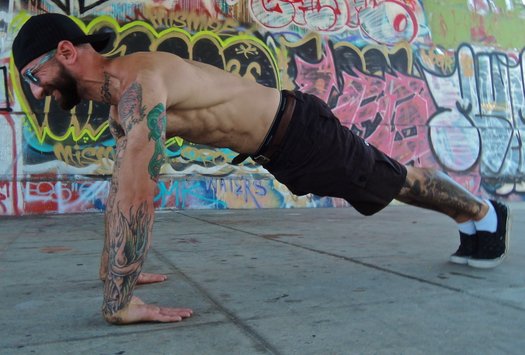
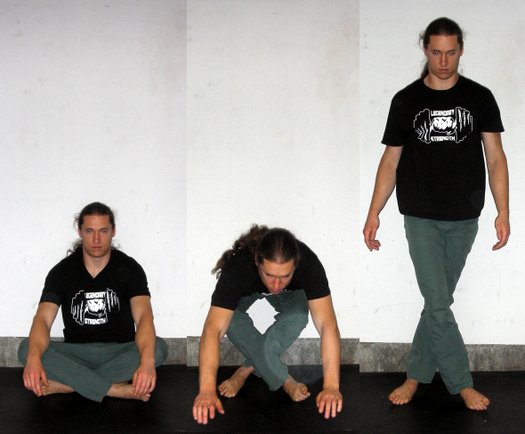
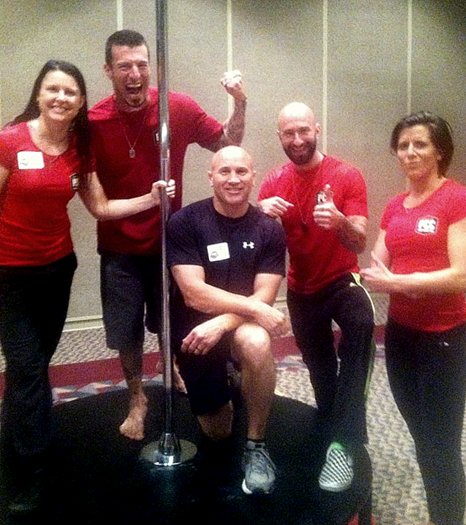
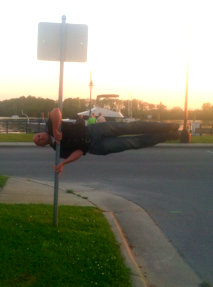 I love analogies. The following is how I see calisthenics:
I love analogies. The following is how I see calisthenics: